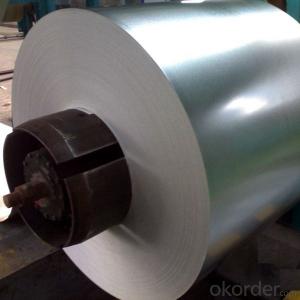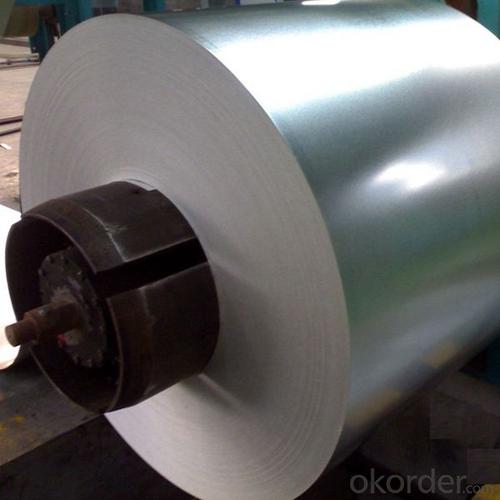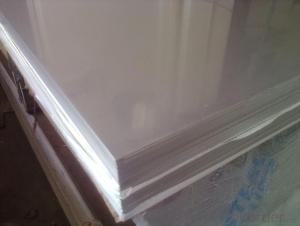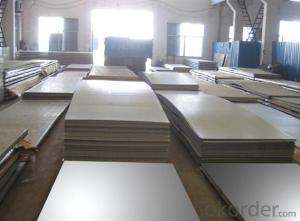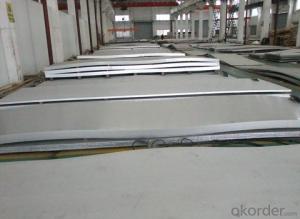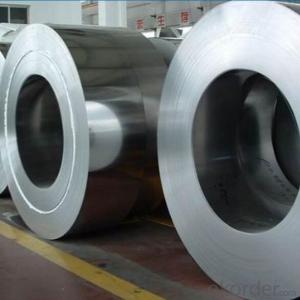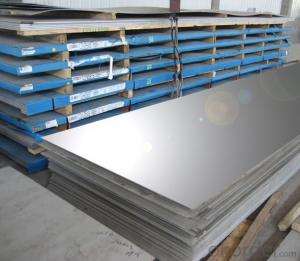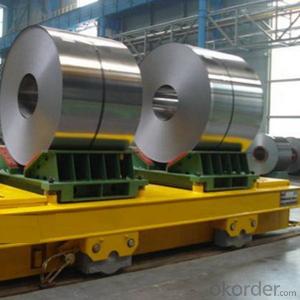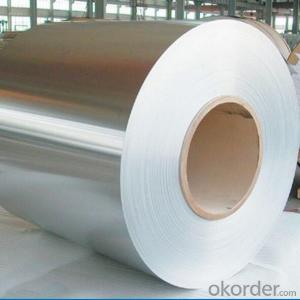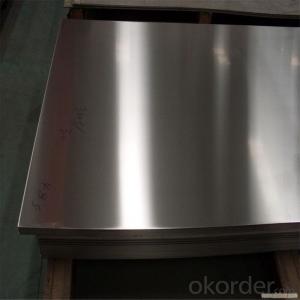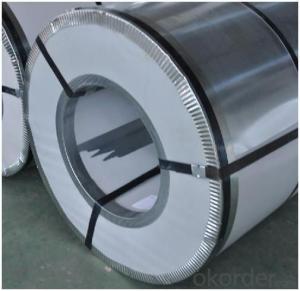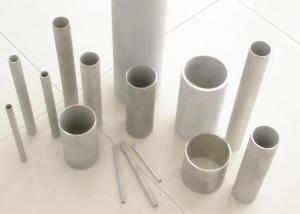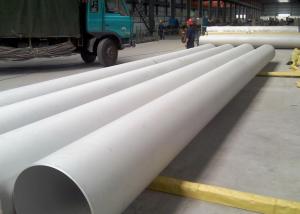Steel Stainless 316 NO.1 Finish, Made in China
- Loading Port:
- Tianjin
- Payment Terms:
- TT OR LC
- Min Order Qty:
- 25 m.t.
- Supply Capability:
- 25 m.t./month
OKorder Service Pledge
OKorder Financial Service
You Might Also Like
Specification
Products Description for Stainless Steel Coils/Sheets:
Name: stainless steel coils/plates/sheets
Discharge Port: Any Port, China
Cold Rolled Size: Thickness0.3-8mm,Width:280-2100mm
Hot Rolled Size: Thickness3-14mm,Width:650-2100mm
Hot Rolled/Cold Rolled Plates : Thickness2-80mm,Width:1500-3000mm
Coil Weight: About 20 Tons
Grade: 201,202,304/304L/304H, 316/316L/316H, 409/L,430 etc.
Technique: Hot Rolled/Cold Rolled
Finish:2B, BA, 2D, No1, No2 etc
Edge: Mill Edge / Slitting Edge
Packaging: In bundles, or as customer's requirement
Place of Origin: Made in China
MOQ: 20 Tons
Payment Terms: 100% LC at sight, or 100%TT in advance
Delivery Time: With 30-40 days after deposit
Packaging & Delivery for Stainless Steel Coils/Sheets:
Packaging Detail Standard export packing or following customer's demand
Delivery Time: Within 30-40 days after deposit or according to the order quantity
Details for the products:
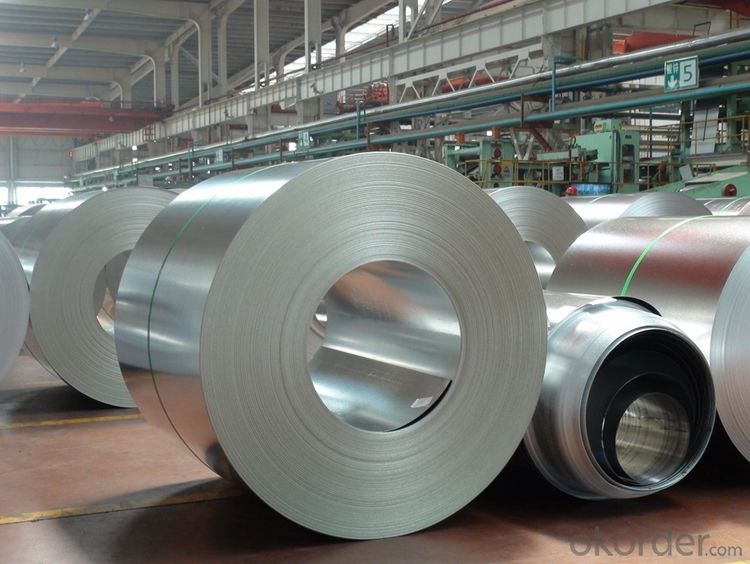

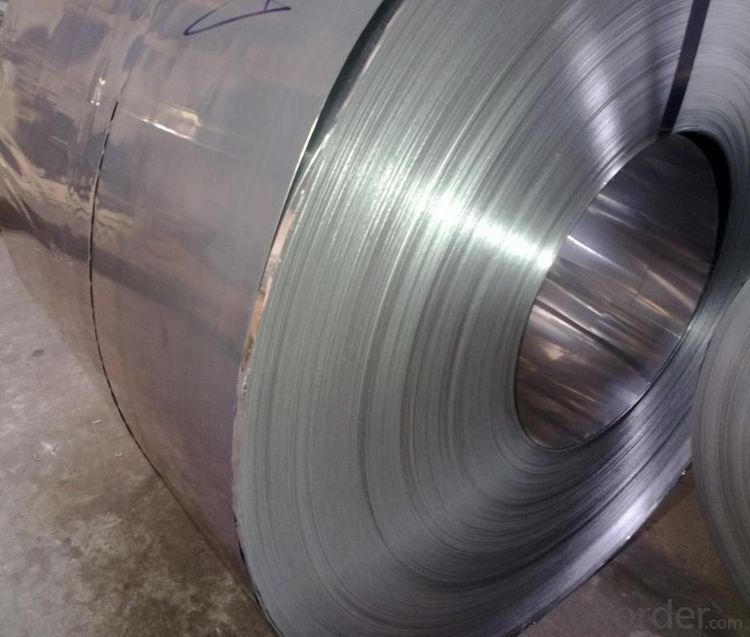
Features of Stainless Steel Coils
(1)Good ductility
(2)Good corrosion resistance
(3)Excellent abrasion resistance and fatigue strength
(4)Good weldability
(5)Oxidation resistant performance
(6)Excellent in high temperature
Packaging & Delivery for Stainless Steel Coils/Sheets:
Packaging Detail | Standard export packing or following customer's demand |
Delivery Time | Within 30-40 days after deposit or according to the order quantity |
FAQ for Stainless Steel Coils/Sheets:
Q:How to order?
A: Please send us your purchase order by email or fax .or you can ask us to send you a proforma invoice for your order .We need to know the following information for your order.
1) Shipping information-company name, street address, phone number, fax number, destination sea port
2) Product information – Quantity, Specification (steel type, thickness, width, surface finish)
3) Delivery time required
4) Forwarder's contact details if there's any in China
FAQ for Stainless Steel Coils/Sheets:
Q:What are the advantages of your company ?
A: We have many professionals, technical personnel, more competitive prices and best after-dales service than other stainless steel companies.
Q:Can you arrange the shipment ?
A: Sure we can help you with the shipment. We have forwarders who have cooperated with us for many years.
- Q: The difference between 304J1 stainless steel plate and 304 stainless steel plate
- The price is lower, the deep processing performance is better.304J1 stainless steel is a copper containing material of 304 stainless steel. It is mainly used for deep processing, and also belongs to the series of nickel. By the Japanese on the basis of the successful development of American Standard 304.
- Q: How do you clean and maintain stainless steel sheets?
- In order to clean and maintain stainless steel sheets, you will require a few basic supplies. These include a microfiber cloth or soft sponge, mild dish soap or a stainless steel cleaner, warm water, and a towel for drying. Begin by rinsing the stainless steel sheet with warm water to eliminate any loose dirt or grime. Next, gently scrub the surface of the stainless steel sheet using a small amount of mild dish soap applied to the microfiber cloth or sponge. It is important to avoid using abrasive materials or harsh chemicals as these can cause scratches or damage to the stainless steel. After cleaning, make sure to thoroughly rinse the sheet with warm water to remove any remaining soap residue. To prevent water spots, use a clean towel to dry the surface. Always remember to dry the stainless steel sheet after cleaning to prevent the formation of water spots or streaks. If there are stubborn stains or fingerprints that cannot be removed with soap and water, you can employ a stainless steel cleaner that is specifically designed for this purpose. Follow the instructions provided with the cleaner and use a soft cloth to apply it to the sheet. To avoid scratching the surface, wipe in the direction of the grain. Rinse thoroughly and dry as mentioned earlier. To maintain the shine and luster of stainless steel sheets, it is important to refrain from using abrasive cleaners, scouring pads, or steel wool as these can harm the surface. Additionally, avoid using cleaners that contain bleach or chlorine as they can cause discoloration. Regularly cleaning the stainless steel sheets is crucial to prevent the buildup of dirt, grease, or other contaminants that can result in corrosion. For most applications, a weekly cleaning routine should be sufficient, although in high-traffic or heavily used areas, more frequent cleaning may be necessary. In conclusion, the process of cleaning and maintaining stainless steel sheets involves gently scrubbing with mild dish soap or a stainless steel cleaner, rinsing with warm water, and ensuring thorough drying. By following these steps and avoiding abrasive materials, your stainless steel sheets will remain clean, shiny, and in optimal condition for years to come.
- Q: Can stainless steel sheets be used for food processing or medical applications?
- Stainless steel sheets can be utilized in both food processing and medical applications. This material is highly durable and resistant to corrosion, making it an ideal option for industries that prioritize hygiene and cleanliness. In the food processing sector, stainless steel sheets are commonly employed for various purposes, including countertops, work surfaces, sinks, storage containers, and equipment. Its non-porous surface inhibits the growth of bacteria and simplifies the process of cleaning and sanitizing. Likewise, stainless steel sheets are extensively used in medical applications due to their exceptional resistance to corrosion, heat, and chemicals. They are employed in medical instruments, surgical equipment, implants, and other medical devices that necessitate high levels of cleanliness and sterilization. Stainless steel's biocompatibility and resistance to body fluids also make it suitable for implantable devices such as pacemakers, joint replacements, and dental implants. In summary, stainless steel sheets are the preferred choice for food processing and medical applications owing to their hygienic properties, durability, and corrosion resistance.
- Q: Can stainless steel sheets be used for electrical applications?
- Yes, stainless steel sheets can be used for electrical applications. Stainless steel is an alloy that contains chromium, which makes it highly resistant to corrosion and oxidation. This corrosion resistance is beneficial for electrical applications where the material may be exposed to moisture or harsh environments. Stainless steel sheets can be used in various electrical components such as electrical enclosures, control panels, junction boxes, and electrical connectors. The high strength and durability of stainless steel make it suitable for these applications, providing a reliable and long-lasting solution. Additionally, stainless steel's non-magnetic properties can be advantageous in certain electrical applications where magnetic interference needs to be minimized.
- Q: What is the maximum thickness of a stainless steel sheet?
- The specific grade or type of stainless steel being used can cause the maximum thickness of a stainless steel sheet to vary. Typically, stainless steel sheets can have a thickness ranging from 0.4 millimeters (0.0157 inches) to 100 millimeters (3.937 inches) or more. However, it's important to note that the availability of thicker sheets may be limited and can differ depending on the supplier or manufacturer. Furthermore, the composition and intended use of certain stainless steel alloys may impose different thickness limits. Therefore, it is always recommended to consult with a supplier or refer to the specifications provided by the manufacturer to determine the maximum thickness of the specific stainless steel sheet you require.
- Q: What is the weldability of stainless steel sheets?
- The weldability of stainless steel sheets is typically regarded as favorable due to the high percentage of chromium present in stainless steel. This chromium forms a passive oxide layer on the metal's surface, which contributes to exceptional corrosion resistance and the prevention of heat-affected zones during welding. Nevertheless, the weldability of stainless steel can differ based on the specific grade and thickness of the sheets. Austenitic stainless steels, such as 304 and 316, are known for their high weldability and can be easily joined using various welding techniques like TIG and MIG. Conversely, martensitic or duplex stainless steels may possess lower weldability due to elevated carbon content or distinct microstructures. These grades may necessitate preheating and post-weld heat treatment to prevent cracking and maintain desired mechanical properties. Moreover, the thickness of stainless steel sheets can impact weldability. Thicker sheets may require increased heat input and specialized welding procedures to ensure proper fusion and prevent distortion. Overall, stainless steel sheets are generally considered to possess good weldability. However, it is crucial to consider the specific grade and thickness of the sheets, as well as the required welding techniques and procedures, to achieve optimal results. Seeking professional guidance and expertise in stainless steel welding is recommended to ensure successful and long-lasting welds.
- Q: What are the advantages and disadvantages of net drawing stainless steel users?
- Brushed stainless steel refers to: stainless steel surface like filamentous texture, this is only a stainless steel processing technology. The surface is Matt, and carefully look at the above there is a trace of texture, but can not touch it.
- Q: Are stainless steel sheets available in different thicknesses?
- Yes, stainless steel sheets are available in different thicknesses.
- Q: Can stainless steel sheets be used in the medical industry?
- Stainless steel sheets have the capability of being utilized within the medical industry. This is because stainless steel is a favored material within the medical field due to its exceptional resistance against corrosion, its remarkable strength, and its ability to endure. It is commonly employed for a diverse array of purposes, encompassing medical instruments, surgical tools, dental equipment, implants, and medical machinery. Moreover, stainless steel sheets are uncomplicated to cleanse and sterilize, rendering them perfect for maintaining hygienic conditions within medical settings. Furthermore, stainless steel is biocompatible, signifying that it is harmonious with human tissues and does not elicit any unfavorable reactions, thereby making it a secure option for medical applications. All in all, stainless steel sheets are exceedingly appropriate for usage within the medical industry due to their myriad advantageous qualities.
- Q: Can stainless steel sheets be used for cryogenic storage containers?
- Indeed, cryogenic storage containers can make use of stainless steel sheets. Stainless steel is renowned for its exceptional strength, durability, and corrosion resistance, making it perfectly suitable for cryogenic purposes. Moreover, stainless steel exhibits low thermal conductivity, effectively reducing heat transfer from the environment to the stored contents. This particular characteristic is vital in cryogenic storage as it helps maintain the necessary low temperatures for preserving materials like liquefied gases or biological samples. In summary, stainless steel sheets serve as a dependable and widely employed material for cryogenic storage containers.
Send your message to us
Steel Stainless 316 NO.1 Finish, Made in China
- Loading Port:
- Tianjin
- Payment Terms:
- TT OR LC
- Min Order Qty:
- 25 m.t.
- Supply Capability:
- 25 m.t./month
OKorder Service Pledge
OKorder Financial Service
Similar products
Hot products
Hot Searches
Related keywords
